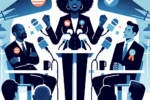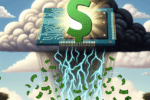Fremont, California – The decision by Tesla CEO Elon Musk to eliminate almost the entire Supercharger team at Tesla has created a setback for President Joe Biden’s electric vehicle (EV) agenda. Musk’s move to slow down expansion and open up Tesla Inc.’s electric-vehicle chargers to other automakers has raised concerns about potentially compromising budding partnerships with other carmakers.
Biden’s administration had been working towards building a nationwide network of half a million EV chargers. The culling of Tesla’s Supercharger team, which included Rebecca Tinucci, one of its highest-ranking female executives, has now raised questions about the feasibility of reaching this goal.
Musk’s unexpected decision has also left automakers like General Motors Co., Ford Motor Co., and Rivian Automotive Inc. in a difficult position just as their customers were starting to gain wider access to Tesla’s charging plugs. Before this setback, Tesla had been projecting an annual profit from Supercharging of around $740 million in 2030.
The White House has been actively promoting tax credits and incentives to boost domestic EV and battery manufacturing industries as part of Biden’s climate bill and infrastructure law. The layoffs at Tesla, along with Musk’s focus on improving the efficiency of the existing charging network, have added uncertainty to the EV landscape.
Despite the setback, more than 40 EV charging infrastructure companies have announced new or expanded manufacturing facilities in the US during Biden’s presidency. The competitive market in the EV industry continues to evolve, with multiple companies playing leading roles in driving the adoption of electric vehicles.
Overall, Musk’s decision to restructure Tesla’s Supercharger team has sent ripples through the EV industry, affecting not only Tesla’s charging business but also potentially impacting the broader goals of Biden’s EV agenda. The future of EV charging infrastructure and partnerships between automakers now hang in the balance as the industry navigates through these challenges.










